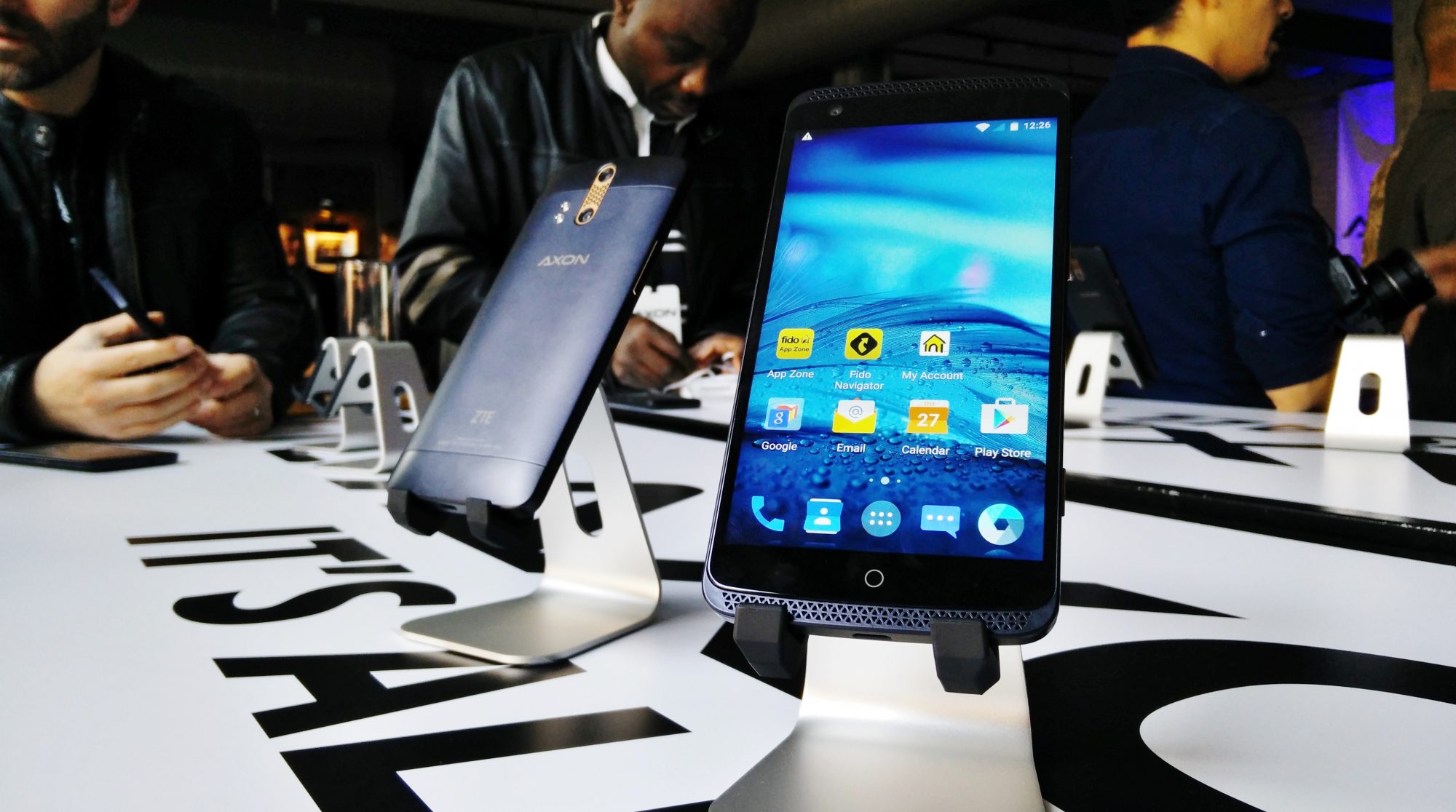You’d be forgiven for not knowing much about ZTE Corporation.
The multinational telecom equipment manufacturer, based in Shenzhen, China, or the country’s own Silicon Valley (the birthplace of fellow Chinese phone maker Huawei), has been steadily creeping up the ranks in smartphone market share in North America.
Depending on what analysts and metrics you believe, ZTE has captured around 8 per cent of the American smartphone market, ranking it fourth in the continent, behind Apple, Samsung and LG.
What has, perhaps, helped its success is its focus on the lower-end market where it sold “good enough” phones at bargain prices. Let’s face it – a $150 off-contract Android just doesn’t warrant the same kinds of headlines – or competition – as those going for $700.
With the launch this week of its flagship “Axon” device, however, the company is not necessarily ditching its affordable roots – the device will be around $400 off-contract from Fido, but the company is finally trying to draw attention to itself from not just consumers, but also the channel.
“The Canadian market is one of the most important markets for ZTE globally,” said Denson Xu, CEO of ZTE Canada at Axon’s product launch press conference in downtown Toronto last week. “The North American market is the most successful overseas market of ZTE.”
But unlike for many other companies, for whom the Canadian market is a smaller, less interesting tack-on, Xu said that customers up north could drive trends for the Chinese company.
“We understand that Canadian customers are actually interested in more premium devices than the US customers,” he said. “That gives us a very important space to bring our brand here and bring more premium devices to the North American market.”
In fact, ZTE is not a new entrant in Canada. According to the company, these observations were made based on 15 years of investment in Canada. The company’s devices go at least as far back as the first clam-shell flip phones that the vendor still sells through carriers such as Rogers and Bell.
Unlike other companies, led by Google and perhaps OnePlus, the company concentrates on indirect sales in Canada. Even its Grand X View LTE-enabled 8-inch tablet is only available through Bell.
“I think [it’s] is not a bad thing for the consumer, because they set a very high threshold for the devices. So they will make sure the device has good quality and performance to meet customer needs,” Xu said. “Carriers dominate the channels here. Carrier partnerships are the most important partnerships in Canada.”






There is a migration of shopping to mobile has caused advertisers to shift their spending to mobile ads. In 2015, mobile will account for 49 percent of ad spend; in 2016, it will gobble up 60 percent of digital advertising dollars. Mobility solutions companies Mobileapptelligence [dot] com, are developing top apps to keep their clients ahead of the curve.